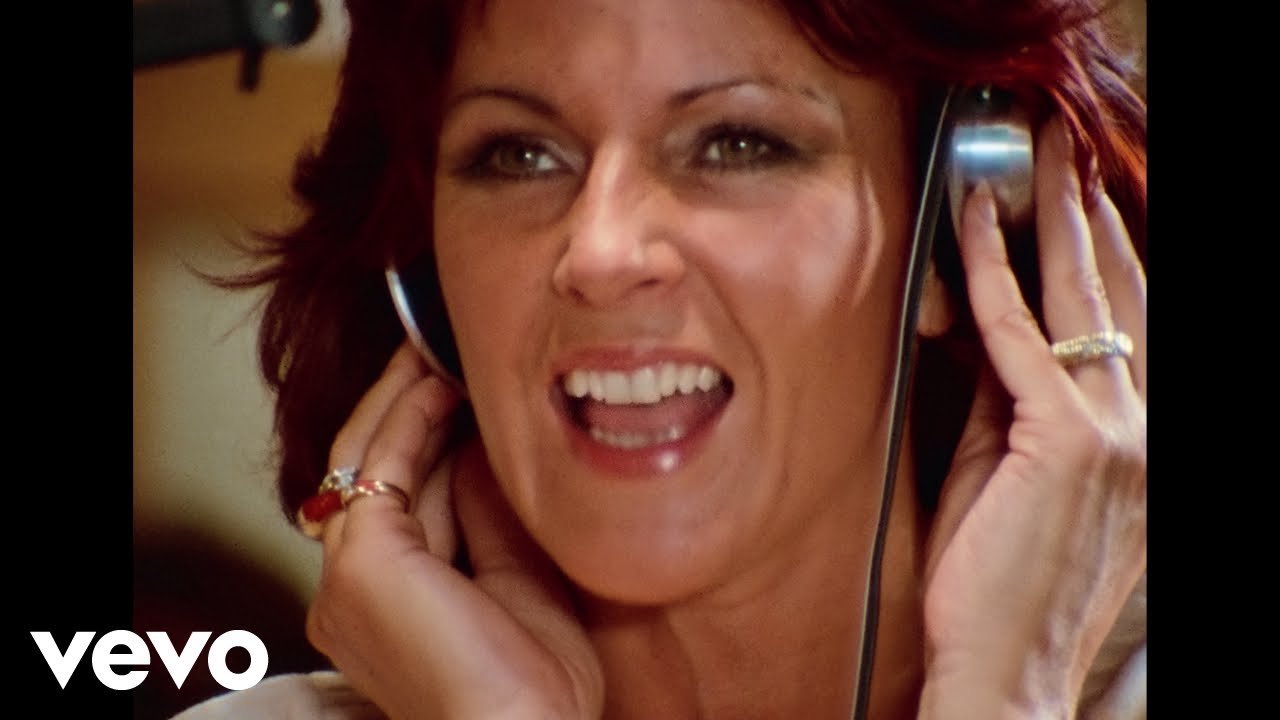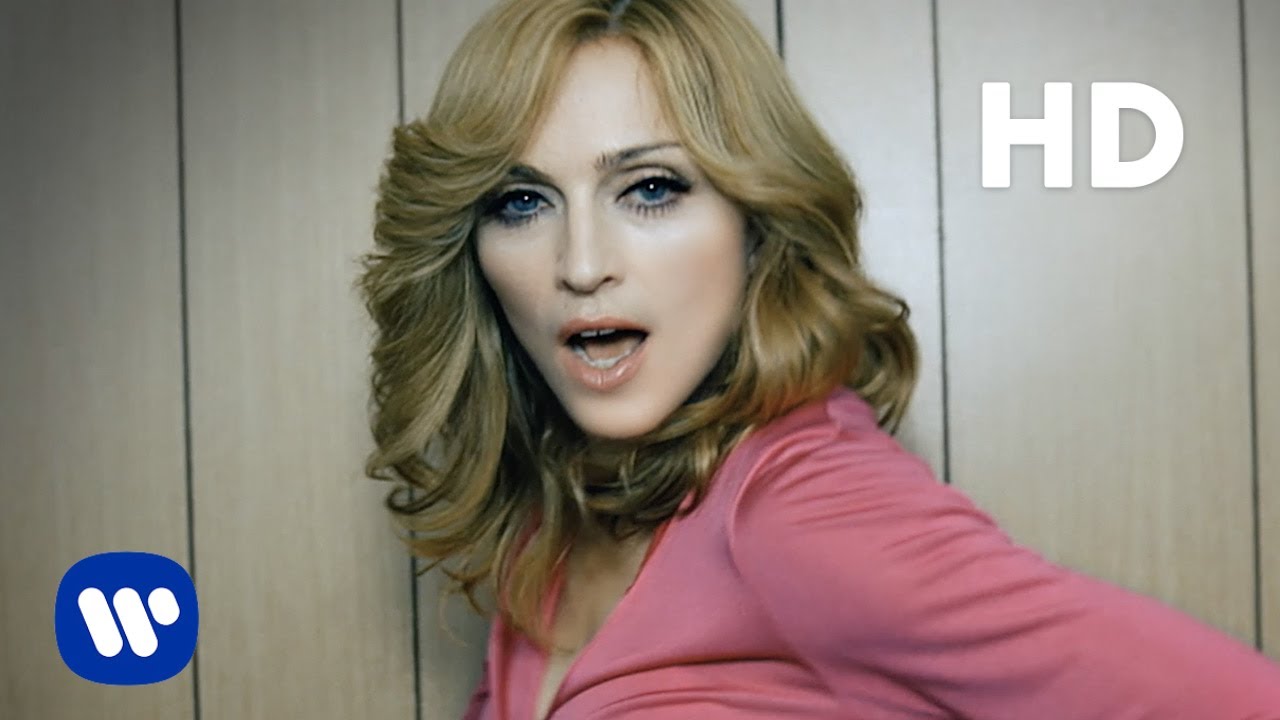Few artists have reinvented themselves with quite such aplomb as Madonna, and on her 14th studio album she shapeshifted yet again, delving back to ’70s disco to produce a sleek album with a title that spoke volumes: Confessions On A Dancefloor.
After the lacklustre album Music (2000) and its politically-fuelled follow-up American Life (2003), the Queen of Pop made the decision to give the people exactly what they wanted — unbridled fun under a gigantic disco mirrorball.
Confessions On A Dancefloor was an acclaimed release that harked back to her classic ’80s output, but it was the lead single Hung Up that really set the bar sky high.
Hung up is an intoxicating mash-up of ’70s disco, ’80s electropop and 2000s club music.
The song gave Madonna her 36th top 10 single in the US.
20 years on from its release, its throbbing strains still sound exhilarating.
By the time Madonna started work on Confessions On A Dancefloor she had been based in the UK for five years, after marrying film director Guy Ritchie in 2000. When she worked on the song Hung Up she was living in a house in South Kensington, one of a number of London properties that she reportedly owned.
Confessions On A Dancefloor encompassed themes such as love, fame and religion, a direct contrast to previous album American Life.
As Madonna told Jennifer Vineyard of MTV News in 2005: “When I wrote American Life, I was very agitated by what was going on in the world around me. I was angry… I made a lot of political statements.
“But now, I feel that I just want to have fun. I want to dance. I want to feel buoyant. And I want to give other people the same feeling.”
Work on the album began in November 2004. Madonna’s initial choice of collaborator was French electronic dance music composer Mirwais Ahmadzai, but after beginning work she found that it was not going in the direction that she wanted.
“All we did was sit around, talking politics all the time,” she told Keith Caulfield of Billboard in 2005. “So, that couldn’t help but find its way into the music.”
Madonna halted the sessions and started afresh, eventually turning to Stuart Price, an English electronic musician, DJ, songwriter and producer who had worked as musical director on Madonna’s previous two tours and who had co-written one song on American Life.
Hung Up was one of the first songs written for the album and Madonna and Price began working on the track at the attic studio of his flat in Notting Hill, west London.
“We did a lot of recording at his house,” Madonna told Katie Hasty of Billboard in 2005. “I’d come by in the morning and Stuart would answer the door in his stocking feet – as he’d been up all night.
“I’d bring him a cup of coffee and say, ‘Stuart, your house is a mess, there’s no food in the cupboard’. Then I’d call someone from my house to bring food over for him. And then we’d work all day. We’re very much the odd couple.”
In an interview for the BBC Song Exploder Podcast in 2022, Madonna and Price spoke about how Hung Up was created.
“The origin of Hung Up came out of Stuart’s brain first,” recalled Madonna, before Price went on to explain the backstory.
“So, it’s 5am. I’m driving back down the M6 from Liverpool to get back to London, and trying not to fall asleep ’cause I’d been DJing for three nights straight, so I better put the radio on.
“On comes ABBA … the song’s called Gimme! Gimme! Gimme! (A Man After Midnight). (It) has this synth riff in it. It, like, cuts through anything… and I thought, ‘Oh, that’s a good idea for a sample’.”

Three hours before his DJ gig the following weekend, Price decided he should “slap something together” with that section of the ABBA song. He sampled it off the vinyl, and played it in through the DJ mixer, with a filter on it.
He began the sample with the tick of a clock, “in part because, when you’re DJing, you are, like, manually beat-matching everything, and the clock is easy to mix in a set. But it also turns out that it works on this other level for the song as well, which sort of supports the lyric of what Madonna came up with”.
At the time they wrote Hung Up, Madonna was working on a soon-to-be-abandoned project for a musical film with filmmaker Luc Besson, which was set in a range of different eras.
When she dropped by Price’s attic studio in Notting Hill and mentioned she was working on a section of the film that needed to evoke ABBA and Studio 54, Price suddenly remembered the sample that he had taken out to DJ with, and played it to her.
“I immediately heard the melody in my head,” said Madonna in the BBC Song Exploder podcast. “Like, (sings) ‘Every little thing that you say or do’. I heard that. Like I just knew it… I just felt intuitively, ‘This is something, this is gonna be something’.”
Listening to the Song Exploder podcast, it’s clear there is an easy chemistry between Madonna and Price. It was a collaboration that instantly yielded results.
“It was just me and Stuart,” Madonna said. “There were no other technicians, there were no other people. Stuart did everything. He played all the instruments, he operated everything, he programmed everything, he was the DJ, and I was just the whiny pop star that showed up.”
All the music they worked on happened in Price’s attic studio, she said. “You had to climb up a ladder to get to it, and it was all white. And it had a couch, a white couch in it, that I would often have nervous breakdowns on.”
Price then set about melding what they had into a song. “I just thought, well, okay, that’s the real ABBA doing the sample. Today, I’m gonna be ‘fake ABBA’. And I started sort of trying to write a verse, and come up with some new chords, you know – play some drums.”
As the song took shape, Madonna recorded an early vocal at Price’s attic studio: “Every little thing that you say or do/I’m hung up/I’m hung up on you…”
This demo vocal would turn out to be the one that ended up on the final recording.
“A lot of times it happens like that,” she recalled. “The first vocal you do, the demo vocal, is always the one you end up using. And you try to perfect it, and you just go, ‘Oh, fuck, nothing’s better than the demo vocal’ and you go back to it.”
Hung Up is an absolute monster of a track, marking a bold return to Madonna’s club roots.
The ticking clock of Price’s sample opens the song, before Madonna’s vocal enters the mix with the repeated opening line: “Time goes by so slowly…”
Each night, Madonna would take a mix back to her house in South Kensington to listen to — and then return the following morning with the next part of the song. This was how the “Time goes by so slowly” lyric came into being.
“That tone there is actually just a filter, just modulating really, really fast,” said Price. “To me it felt like a cityscape. It felt like you were sort of driving through a city, and there was some sort of buzz of the lights, or electricity.”
15 seconds into the 125 bpm track, a thumping sub bass kicks in as the Gimme! Gimme! Gimme! sample begins.
At 0:32, ABBA’s iconic ascending and descending synth arpeggio, played on an ARP Odyssey, fades in.
Six seconds later the kick drum pushes through, then the riff and at 0:46 the whole thumping track bursts into life.
As the song progressed, Price realised he needed to create different textures for the vocals.
“And so using a pitch shifter, just by lowering Madonna’s vocal down, not a whole octave, it just goes halfway, drops down a fifth or something, it just created this effect where it feels more like ‘male’ in its sound.”
This is evident on the line “Every little thing that you say or do, I’m hung up”, on which Price melded the pitched vocal effect with a vocoder.
Lyrically the song is direct and heartfelt.
“Hung Up is kind of a love song,” said Madonna. “I’m saying, ‘Every little thing that you say or do, I’m hung up on you’ — but also, I’m over it. I’m over the bullshit.
“Like, ‘You’re not there. You’re never there for me, so I’m hanging up on you’.”
It was soon clear that they were creating something special but there was one potential snag. They had yet to secure permission from ABBA to use the sample of Gimme! Gimme! Gimme! (A Man After Midnight).
Madonna sat down and wrote a letter directly to the song’s composers, Benny Andersson and Bjorn Ulvaeus, requesting their permission to use the sample and telling them how much she loved their music.
Then, in a move more reminiscent of a 17th century head of state, she dispatched an emissary to go to Sweden to deliver the letter to them directly.
The personal approach worked. Andersson and Ulvaeus eventually agreed to Madonna’s request to use the sample, and reportedly had a copyright agreement drawn up entitling them to a significant share of the royalties from subsequent sales and airplay.
“We get so many requests from people wanting to use our tracks but we normally say no,” Andersson told Chris Hastings of The Daily Telegraph in 2005. “This is only the second time we have given permission. We said yes this time because we admire Madonna so much and always have done. She has got guts and has been around for 21 years. That is not bad going.”
Hung Up was released as the lead single from the Confessions On A Dancefloor on 17 October 2005 and went to No.1 in a staggering 41 countries.
The video featured Madonna in a pink leotard and she stated that the song was a tribute to John Travolta and to dance in general.

Hung Up remains one of Madonna’s finest songs.
In Stuart Price, she found a gifted ally and together they made a strong creative union.
“It doesn’t happen a lot,” she said in the BBC Song Exploder podcast, “but every once in a while people collide, you know what I mean? Creative minds collide and end up making magic together.”
GIPHY App Key not set. Please check settings